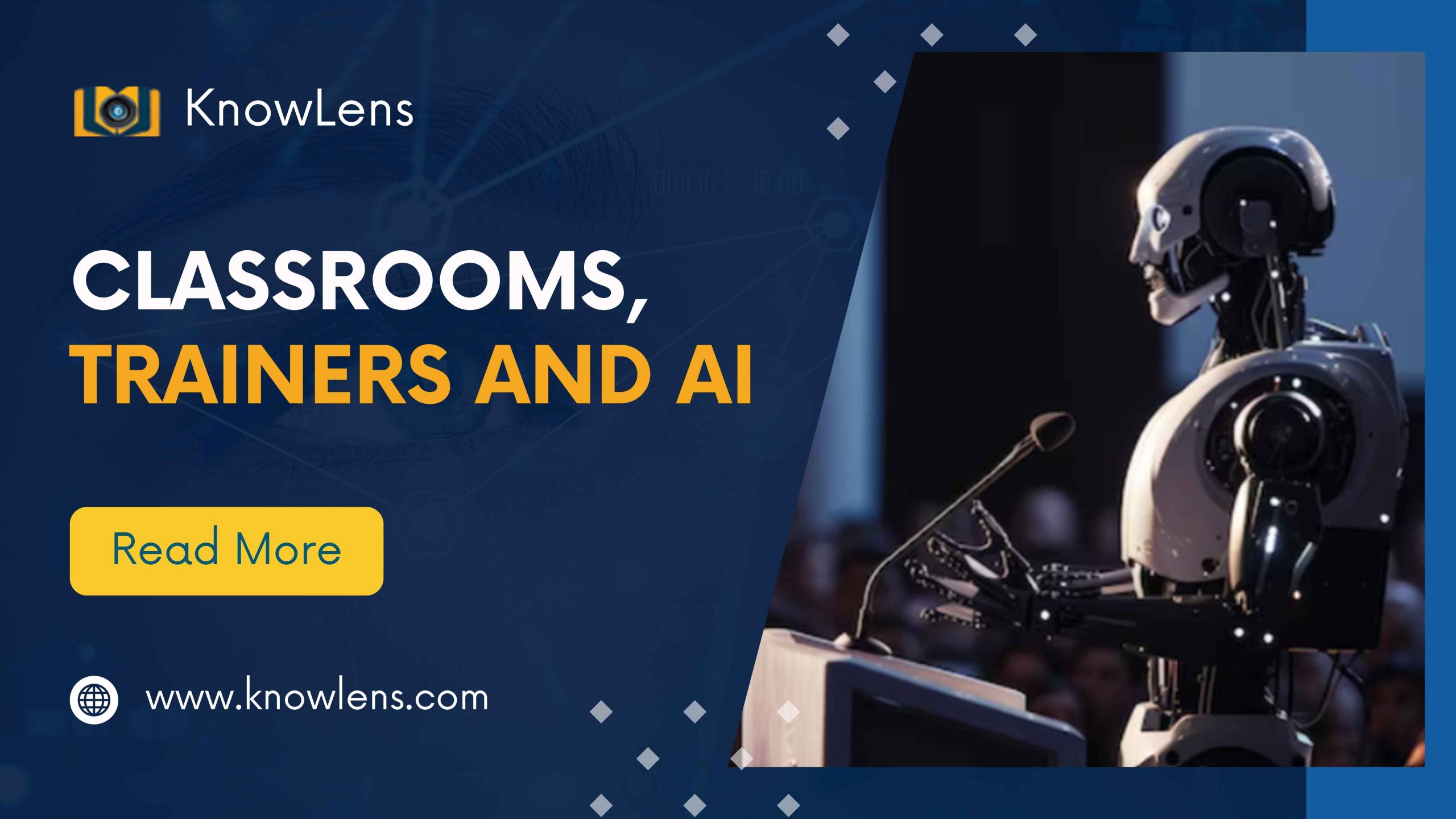Classrooms, Trainers and AI
The $340 billion corporate learning landscape is on the brink of a revolution, driven by the rapid advancement of Artificial Intelligence (AI). As AI begins to transform the way we learn, the traditional importance of classroom training through corporate trainers is evolving. Will traditional trainers adapt to this new era of immersive education, or will they become relics of the past?
The World of Traditional Training
Imagine the world of a typical corporate trainer: familiar with the challenges of traditional classroom training. What was the usual routine …you are provided a cohort, you understand the topic, understand how the concepts related to the topic would work out and then the trainer would conduct the classroom session.
The New World
The learner now has alternate sources of digital information which are highly adaptive to each learner. Infinite content is suddenly literally at the fingertips …with a few strokes of the keyboard.
The Way Forward?
So is the classroom going to disappear in this scenario? What are the elements of the classroom which still cannot be replaced? What are the elements of the classroom trainer experience which are inevitably going to get challenged or perhaps enhanced? Like in every walk of life, AI will have a massive impact on this space …the physical classroom.
AI and the Corporate Trainer
Let’s dive in a little deeper into the exciting but intimidating new AI immersed world of the corporate trainer. In the context of this piece, we will split the typical session into the following elements:
Pre-Delivery (Assessment and Planning)
Content Creation: For the workshop the trainer needs to create content. This is probably an area where the traditional trainer approach will be revolutionized.
- Research: With all the powerful level 4 Generative AI interfaces, getting base level content created for a given topic is now so much simpler. E.g. If a trainer was to conduct a workshop on negotiation skills, the material is now easy to assemble.
- Content Contextualisation: Over experiences of several workshops with different cohorts, suddenly your content can get fine tuned to specifically focused content for a target audience. E.g. In a course on negotiation for a real estate sales cohort, I can take a concept ( ZOPA – Zone of Possible Agreement) and actually derive examples which are related to a real estate negotiation.
- Heterogeneous Cohort Contextualisation: Now imagine in this course on Negotiation, I have purchase managers and sales executives – a trainer’s nightmare….how does one find examples for both. Here again AI can really help in balancing the material.
- Materials Preparation: And finally, AI can help create or acquire learning materials, such as manuals, presentations, surveys, assessments and interactive exercises all related to the training.
There are certain limitations to all this: Quite often the AI output can be “hallucinatory”, or the material is too theoretical and generic, and the trainer needs to be careful in exercising their own judgment.
All in all, what’s interesting to understand is that these are all being done…are corporate trainers adapting to these new avenues?
Delivery
The delivery and the human classroom experience is one of the reasons why AI can complement but never replace the classroom. It’s essential to recognize the unique strengths human trainers bring to the table. Domain knowledge, ingrained experience, emotional intelligence, empathy and ability to understand nuances are crucial.
Some of the recent innovations in classroom structures include:
- Leveraging pre reading and post session exercises and making the classroom the most impactful human group learning experience it can be. For instance, taking the example of the Khan Academy, the classroom is just used for doubt resolution and advanced discussion, the theory is pre read.
- This is where the right scenarios, the right research in the previous section can help illuminate the classroom discussions …all the while leveraging the special knowledge and expertise of the trainer.
Post-Delivery (Evaluation and Reinforcement)
AI again assumes prominence in this phase.
- Evaluation: AI can analyze assessment data and learner feedback to evaluate training effectiveness as well as assess the learning.
- Follow-ups & Hybrid Learning: Based on the content for the classroom, follow on microlearning and other interventions can be easily digitally adapted for the learning cohort leading to a best of the physical classroom and the AI driven digital space.
The Future
In summary, classroom training in the AI world is increasingly moving towards a hybrid methodology. Trainers need to be cognizant of the changing trends and smell the coffee. Some important tips:
- AI is a tool, not a replacement: Human trainers bring unique strengths that AI systems currently cannot replicate.
- Collaboration is key: By working alongside AI, the trainer can create more effective and engaging learning experiences.
- Continuous learning is essential: Trainers need to stay up to date with the latest developments in AI and corporate training to remain relevant and effective.

